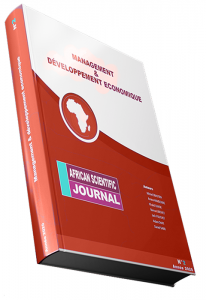The diversification of the Moroccan exportable offer through the analysis of its revealed comparative advantages
DOI:
https://doi.org/10.5281/zenodo.6561070Keywords:
Export; Structural transformation; Import; Comparative advantage; competitiveness.Abstract
Structural transformation for a given country can be reflected in the diversification of exports into new products and trading partners as well as in the improvement of the quality of existing products. Indeed, the analysis of the export structure makes it possible to identify whether a country’s economy is undergoing a process of structural transformation and integrating an increasing degree of technology in its supply to external markets. In other words, the migration of productive resources from agriculture to industry and services.
For Morocco, the challenge of the competitiveness of the economy and the improvement of its positioning in the global chain have pushed it to undertake a certain number of reforms in order to prepare a favorable climate for investment and the attraction of foreign direct investment (FDI). These reforms have enabled it to rank 53rd in the doing business index in 2020.
The process of technological catching up with the industrialized countries appears in the degree of sophistication of its exportable offer, which may be possible if the country is able to take advantage of the synergy of its national territory with the free territories, created within the framework of the national strategy of the revival of its industry.
In this research work, we will verify the existence and identify changes in the structure of Moroccan trade with the rest of the world, during the period studied, from the year 2005 to 2018. In other words, we will study the structure of Moroccan trade in order to verify whether the positive growth rate of Moroccan export activities reflects a new configuration of the country’s export map and a real gain in competitiveness on the world market.
Downloads
Published
How to Cite
Issue
Section
License
Copyright (c) 2022 African Scientific Journal

This work is licensed under a Creative Commons Attribution-NonCommercial-NoDerivatives 4.0 International License.





















